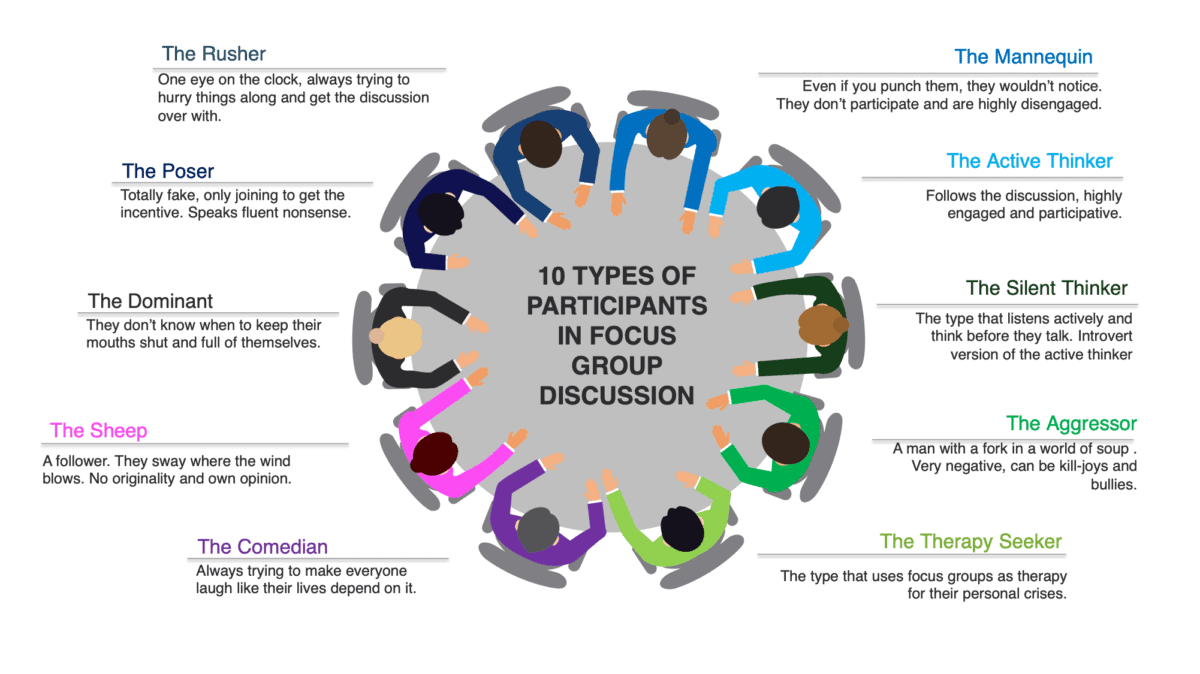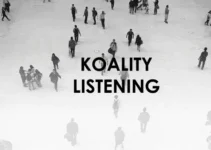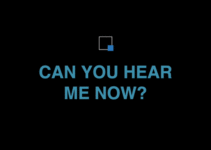After doing a lot of focus group moderation, you would be able to identify several participants’ types/personas. Just imagine different personalities among your friends or colleagues hanging around us that we love to hang out with, some colleagues – we don’t mind, and some that we would love to slap their faces with a concrete slab.
In qualitative research, our research is only as good as our participants, so you must select your participants carefully and manage each type to get the best out of them.
This post will share the common theme of participants in focus group discussions and how we can handle them.

The Rusher
Identification: Easy
Management: Normal
Impact on the group: Negative
Rarity: Common
They act as though they are living on borrowed time and would try to rush the discussion. They want to move quickly and would rather not be in the moment and participate
How to spot them
An obvious verbal warning like “I need to leave in 1 hour sharp.” Or “How soon can we leave?”. They would even try to dominate the discussion by saying, “Okay, done, let’s move on to the next question,” etc.
They would always look at their watch and let out an impatient sigh every once in a while. They would try to let everyone know they have other commitments and influence them to hasten the process.
How to manage
Spotting them from the start is very important, lest they drive you up the wall later.
- Try not to select the respondent for the discussion despite how valuable their contributions might be, as they could disrupt the group dynamics. Make it clear during the introduction that the discussion would take up a certain amount of time and ask if anyone would have an issue with the estimated duration; they should not participate and leave before starting.
- Assert that they are free to leave if pressed for time and warn them not to rush the discussion.

The Poser
Identification: Difficult
Management: Difficult
Impact on the group: Negative
Rarity: Common
If qualitative is a healthy human being, the posers are cancer. One who loves the food ought to hate the cockroaches. These are participants whose sole motivation and intention is to acquire the incentive, and they would sometimes try to wriggle their way in by false profiling upon selection. Since they are not the person with the criteria they claim to have to participate, they would not have valuable input and spew garbage and useless data. You would be surprised to see the number of people who do this for a living by moving from group to group to reap the benefits; the things people do for money, eh?
How to spot them
They are chameleonic, so it is tough to spot them. Some would even use other people’s IDs and change their appearance (wear a wig, change their hair colour, use someone else’s kid, etc.) to fit the particular profile the group is looking for. The only available option is to try and memorise them so you can identify them at the very start. When they arrived at the focus group discussion venue, they avoided eye contact and tried to stay below the radar. Some would do the exact opposite and be very chatty and familiar. Watch out for the telling signs.
You would know they are the wrong profile during the discussion; their answers will not make sense as they try to fib their way through it. Urgh.
How to manage
I really hope that when they want to sneeze, they won’t be able to. And their facial muscles just hit pause, so they would use that pre-sneeze face all the time so we could spot them easily. Moving on, how do we manage this type:
- It is crucial to detect them early on. Just like cancer, early detection proves effective. Maintaining a database with an ID number and cross-checking before the discussion would help.
- If you identify them after the session has started, kick them out immediately. Step out to inform your client and return to replace them, but do so diplomatically. Separate them from the group by asking them to come out and call out an excuse like having to repark their car or that they are needed elsewhere.
- If, by some misfortune, you cannot kick them out, refuse to acknowledge their feedback. Avoid eye contact and do not ask for their contribution.
- After the discussion, confront them and refuse to pay the incentive. If you have proof, use it to fend them off and threaten to take legal action, as they might resort to anything when desperate. They are like vultures looking for any scrap they might get, so don’t give in.

The Dominant
Identification: Normal
Management: Normal
Impact on the group: Normal / Negative
Rarity: Common
The dominant participant is usually in love with their own voice and opinion. Sometimes, they give valuable responses; other times, they do not, but because they are so controlling, their responses influence or drown out other participants’ opinions.
How to spot them
They are quite charismatic and love the sense of control; they tend to take the lead in the discussion, so watch for those who always try to answer first and wrestle to monopolise the discussion.
I noticed that they love to announce their expertise on the subject and list their achievements. They tend to be louder since they demand attention, so you may spot them when they arrive at the venue and observe the interaction between the participants. Physically, they have a pronounced way of carrying themselves: puffed up chest, widely opened or crossed legs as they sit and initiate intense eye contact. They want you to notice them and will do anything to hold your attention because they feel that their opinions are the only ones that matter and should be heard.
How to manage
One way to control this dominant participant is if you think they are dominating the conversation too much, take that power away – your attention towards them.
- If you can spot them early, place them next to the moderator. That would prevent them from dominating the group.
- The first step is to address the whole group and plea for the rest of the participants to join. You can say, “Now that we have heard X’s views on this, what about your own? What is your personal opinion on this?”. Try to enable others by disabling the dominant. Call out Y, Z, and W individually to voice their words.
- Subdue them and encourage others – “Okay, X, I want you to be quiet for a while so I can hear other people’s take on this.”
- Avoid eye contact.
- Avoid directly addressing them.
- You can also ask them an open-ended type of question. I know it’s the qualitative method’s antithesis, but this would somehow discourage them from monopolising the conversation.
- Be firm. Politely refuse to be interrupted.
- You can also set a timeline – “I will give you another 10 seconds to talk, then I want to hear from the rest, okay?”
- If you only notice their dominance during the group and are not sitting next to you, you casually walk and sit behind them when you ask a question. The attention of others would keep them somewhat quiet/content.

The Sheep
Identification: Normal
Management: Normal
Impact on the group: Normal / Negative
Rarity: Common
The direct opposite of The Dominant and the flock is aplenty. They tend to agree with others, are generally non-opinionated, and always try to be a part of the “gang” with the strongest opinions.
How to spot them
It is pretty challenging to identify them early on, but you would know who they are as the conversation goes on. In the beginning, they would try to offer their opinion. If someone disagrees, they would withdraw to their safe zone, nod along, and try to agree to everything, almost like they don’t have any original thoughts left.
You need to spot them and call them out before it’s too late, lest all you will hear from this type of participant would be, “Yes, I have a similar opinion to X.” Or “Nothing to add, same with everyone”. The Sheep would always look around the room before responding, even giggling with uncertainty, unsure that their answers would be of merit or value.
How to manage
You can offer these people a safe environment to share their opinions.
- Establish early on that you want to hear from everyone, every single one, and that opinion is subjective, and it is okay to have a different opinion than others.
- Challenge them, but be gentle if they are already shying away from the spotlight. Assure them that you want to hear everyone’s opinion – direct it to the group but maintain eye contact with them.

The Comedian
Identification: Easy
Management: Easy
Impact on the group: Positive / Normal / Negative
Rarity: Common
The funny ones. They can be good participants and help make the conversation fun or be distracting, gossipy, and disrupt the focus.
How to spot them
Jokes and laughter. They appear very engaging; they would use the discussion points as fodder. They express positive body language; they smile a lot and continuously look around the room for acknowledgement and approval. You need to identify if they can be your wingman and help foster a good environment or a disruptive annoyance.
- Your wingman; they joke around, but they deliver the message and communicate well with others, never straying too far from the topic
- Annoying type; if they deflect all the questions and interrupt others with their never-ending jokes and quips.
How to manage
Depending on the type and the appropriateness of their jokes, this type is relatively easy to manage. The painful part is that the jokes are not funny and just plain lame. Then you are out of luck.
- Provide regular redirection by reminding them to be cooperative and participative.
- If they become too much of a distraction, ask them to stop. Take your attention away from them, and use the same treatment as you would toward the dominant type.

The Mannequin
Identification: Normal
Management: Difficult
Impact on the group: Negative
Rarity: Common
They are disengaged, unmotivated, absent-minded. The Mannequin is just like their label: an empty vessel devoid of a mind, soul, or both. They significantly drain your time and energy, which is detrimental to the group dynamic.
How to spot them
Fiddling with their phones, noncommittal, avoiding eye contact, they will find other distractions, and once in a while, you can spot them having a side discussion with another participant.
It can be difficult to detect the signs early on as nowadays, everybody is glued to their phone. They might pass the screening test undetected.
How to manage
Order & punishment seems to work well with this type
- Provide a clear expectation in the initial discussion to ensure everyone would participate equally.
- Demand their attention and accountability; you can call them out by name and ask their opinion.
- Ask them to stop playing with their phones or hair or having side discussions.
- I find it especially effective to warn them that we will not pay out their incentives if they continue to be full-time zombies.
- Ask them to leave if they are not cooperative.

The Active Thinker
Identification: Normal
Management: Easy
Impact on the group: Positive
Rarity: Common
Bruce Lee once said, “Give me 8 active thinkers, and I would moderate the group like an orchestra”. True story. This is the best type of respondent, and when you recruit the right people, you are reaping the full benefits of your investment.
How to spot them
You wouldn’t know them immediately, but you will be convinced halfway through the discussion.
They are participative, think before speaking, and are always willing to help you to the best of their ability. They are usually calm and collected with positive body language, listen and talk earnestly, with apparent interest and absorption.
How to manage
Smile and enjoy the conversation. Always encourage them to speak. Pay attention and follow up whenever possible.

The Silent Thinker
Identification: Normal
Management: Easy
Impact on the group: Positive
Rarity: Rare
Another great type, but the more introverted version of The Active Thinker. They appear quiet at first but be prepared to grab all the gold they spew once they start to speak.
How to spot them
They are hard to identify as they tend to go with the flow and be a part of the majority, like The Sheep. They are quiet, and it is easy to confuse them with The Sheep, but if you can construct a safe and encouraging environment, they will be more vocal and comfortable expressing their opinions. They are usually laid-back, expressing positive body language like gentle nodding and leaning in, and appear to engage in the discussion well.
These participants are of quality, and their contributions are exceptional.
How to manage
Get the participant involved and speak up as early as possible.
- Please encourage them to speak and foster a safe environment.
- Avoid addressing them by name as it might be a little aggressive for this type, but maintain eye contact while making a general remark or asking questions.
- Foster a problem-solving vibe; they enjoy intellectual banter but on their terms and pace.
- You can challenge them with, e.g.:
- What could be better?
- What can Brand X learn/do?
- Any flipside?

The Agressor
Identification: Easy / Normal
Management: Difficult
Impact on the group: Negative
Rarity: Rare
The Aggressor is self-explanatory; they are bullies who pick on others (moderator included) to make themselves feel superior. They are prone to mood swings, poison the group atmosphere and create a hostile environment for everyone.
How to spot them
They are not easily spotted in the reception.
But in the first 20 minutes of the discussion, you can identify them easily. They can appear humorous, but you can sense the negativity. Usually, they would find ways to contradict you / others, unwilling to compromise or collaborate. Like The Dominant, this type would show dominating body language, such as intense eye contact and leaning over to intimidate when they speak.
How to manage
Man, they do not spark joy. That much is certain.
- If you identify them early on, replace them with another participant.
- If you identify their behaviour early in the discussion, warn them that such behaviour will not be tolerated and allowed to continue. If they persist, kick them out.
- As a moderator, you are supposed to command the room. You should be an authoritative figure. It could be helpful to get them on your side and give them the impression that they are the enforcer / your second-in-command. Establish a buddy relationship while keeping it light and fun.
- Show that the attitude does not amuse you.
- Reward them when they are cooperative.
- If you can keep them on your side, they will become somewhat docile and participative.
- When I had just started moderating – in one of my political studies, where the topics were quite sensitive and controversial – I had a participant who physically assaulted another because of the difference in opinion. We stopped the discussion immediately and asked them to go outside, away from the group, smoke a cigarette and shake hands. They eventually rejoined the discussion, but the destruction that the aggressor had left in his wake proved too toxic and utterly changed the group dynamic irrevocably, causing the discussion to be cut short. No one wanted to talk openly anymore; everyone had become afraid of voicing out their thoughts for fear of another altercation.

Therapy Seeker
Identification: Difficult
Management: Normal
Impact on the group: Normal / Negative
Rarity: Mythical
Shit happens sometimes. And it can be overwhelming for some. Instead of going to therapy, this type thinks they can get the same benefits by participating in a focus group discussion. When that happens, you would suddenly be privy to embarrassing health issues, intimate details of failing relationships, and so on. You might even have to help wipe away hysterical tears unwillingly, and so on. Bummer. You did not sign up for this.
How to spot them
There are no tell-tale signs from their body language, making them almost impossible to detect; they usually appear normal. Well, they are normal, but oh, so easily triggered and just waiting to share how unhappy they are with whatever makes them so sad.
And when that happens, prepare for a stream of tears without Coldplay’s Fix You in the background. Be warned that it can be followed by a series of unrelated and uninterruptible sob stories.
How to manage
It is easier for them to cry in front of strangers; they are not embarrassed and desperately need an outlet. What you can do for this blatant show of pain is to offer some sympathy.
- Give them a tissue and a glass of water and ask if they would feel well enough to continue.
- If they agree, assure them that it’s okay to have a moment of weakness, but gently remind them that you are there to achieve a specific objective and would love to hear their opinions relevant to the discussion.
- If they cannot continue, kindly ask them to leave the group and recover at the reception area, have someone talk to them, and hear them out. Be kind; you do not know their pain and what they are going through, and you never know how much a kind word or just listening actually helps.

Final Words
Managing different personality types takes a lot of hard work and effort, but we can only get better with experience and practice. The participant types can also be interchangeable, sometimes assuming different personas. A different approach and strategy would be required to get the best out of them.
What’s your favourite type, and what’s your experience participating, observing, or managing the participant’s different types? Or do you hate all human beings equally?






1 thought on “10 Types of Focus Group Participants”